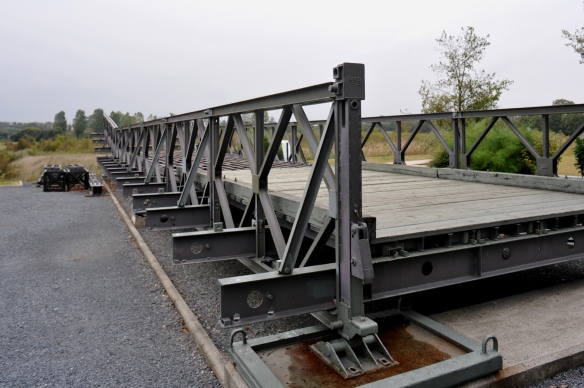Sir Donald’s Bailey Bridge
World War I
During World War I men disappeared into trenches after the first few months and then spent over three years fruitlessly trying to prove that the machine gun, artillery, and barbed wire could not stop a determined attack.
The infantry of the time were well trained in digging, as infantry have been since time began, but they were transformed into military engineers when the movement stopped. The Germans had outrun their supply lines, and both sides were exhausted by the early fighting and the punishing marches they were forced to undertake. The defenders, essentially the French and the British, had their backs to the wall when they decided to dig in to make a last stand before Paris. The Germans dug in as well, to try to get some rest before the final push. And that is how things stood for nearly four years.
Trench systems were of unbelievable complexity. There were three parallel lines of trenches (very similar to Vauban’s system) with communication trenches running between them. In the front line, however, where shelling was most frequent, the trenches were often knee deep in water and mud, and in perpetual need of work to shore up cave-ins. British and French trenches were built in a less permanent way than those of the Germans, because the French and British were always planning to advance from their positions. The Germans were more methodical, and built much deeper, better underground living quarters, which were meant to be shell proof.
World War I was an example of siege-craft fought with more modern weapons. Rifle fire was far less effective than machine-gun and artillery fire, and the defender always had the advantage until tactics changed in the spring of 1918. Even the much vaunted tanks were incapable of making the necessary breakthrough because the engineers could not fill every shell hole in the battlefield, nor make every remaining bridge capable of supporting a tank.
World War II
World War II saw military engineering develop its repertoire still further, and many of the techniques of that war still work today, albeit with even more sophisticated equipment. There were concrete bunkers to be built (the French Maginot Line and the German West Wall being two enormously expensive and extensive static defense systems), and the means to defeat them to be considered. There were portable bridges to be designed, which could be quickly erected across waterways where bridges had been destroyed (the British Bailey bridge is the prime example of this). Engineers also started to become specialist assault troops: the Germans included pioniere (or field engineers) in their frontline troops, and the record of their achievements includes many assaults on Vauban-style forts, which were reduced by means of demolition charges and flamethrowers. In World War I the Vauban forts withstood months of shelling, as shown by the battle of Verdun.
An early example of specialist engineer operations in World War II was the German glider-borne attack on the Belgian fort at Eben Emael, which obstructed the planned German advance across Belgium when the invasion of the West began on 10 May 1940. Landing on the roof of the fort, the German engineers disabled all the gun emplacements with shaped charges that had good concrete-defeating power.
Engineers were employed on every front in World War II, including in the Pacific War against the Japanese, where specialist engineering equipment, such as bulldozers, was often needed to supplement flamethrowers and demolition charges to defeat the defending bunker or “foxhole” positions. Throughout the war engineers both destroyed obstacles and built them, and they also built many airfields right behind the front lines.
More specialist engineering equipment was designed and used on D-Day, 6 June 1944, when Allied forces under General Dwight D. Eisenhower landed on the Normandy beaches to start the western push on Germany. Swimming tanks, anti-bunker tanks, and flamethrower tanks all arrived on the beachhead at the same time as the infantry, and they were fundamental in enabling the British and Canadian forces to get through the first line of defenses and start inland. Surprisingly, the majority of this equipment was, although offered, not taken up by the American forces, who suffered their absence to some extent.
